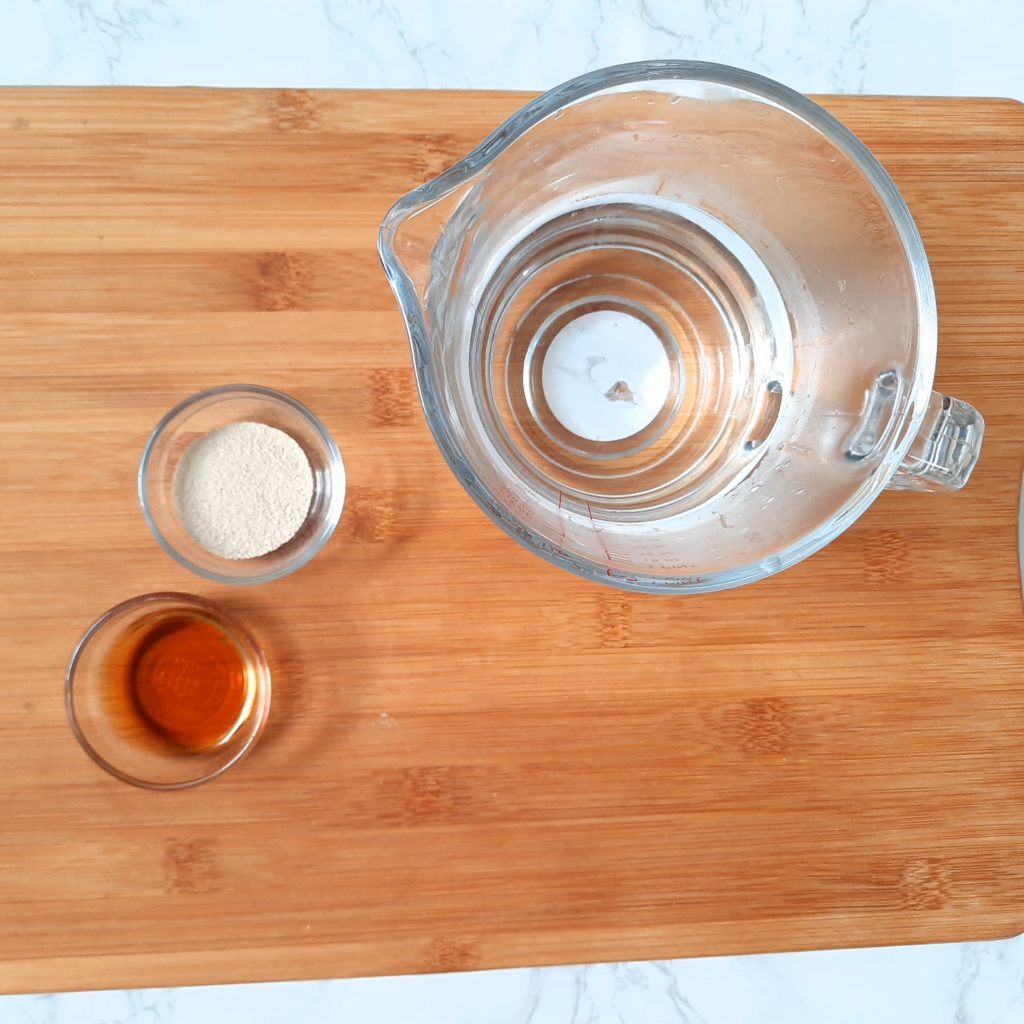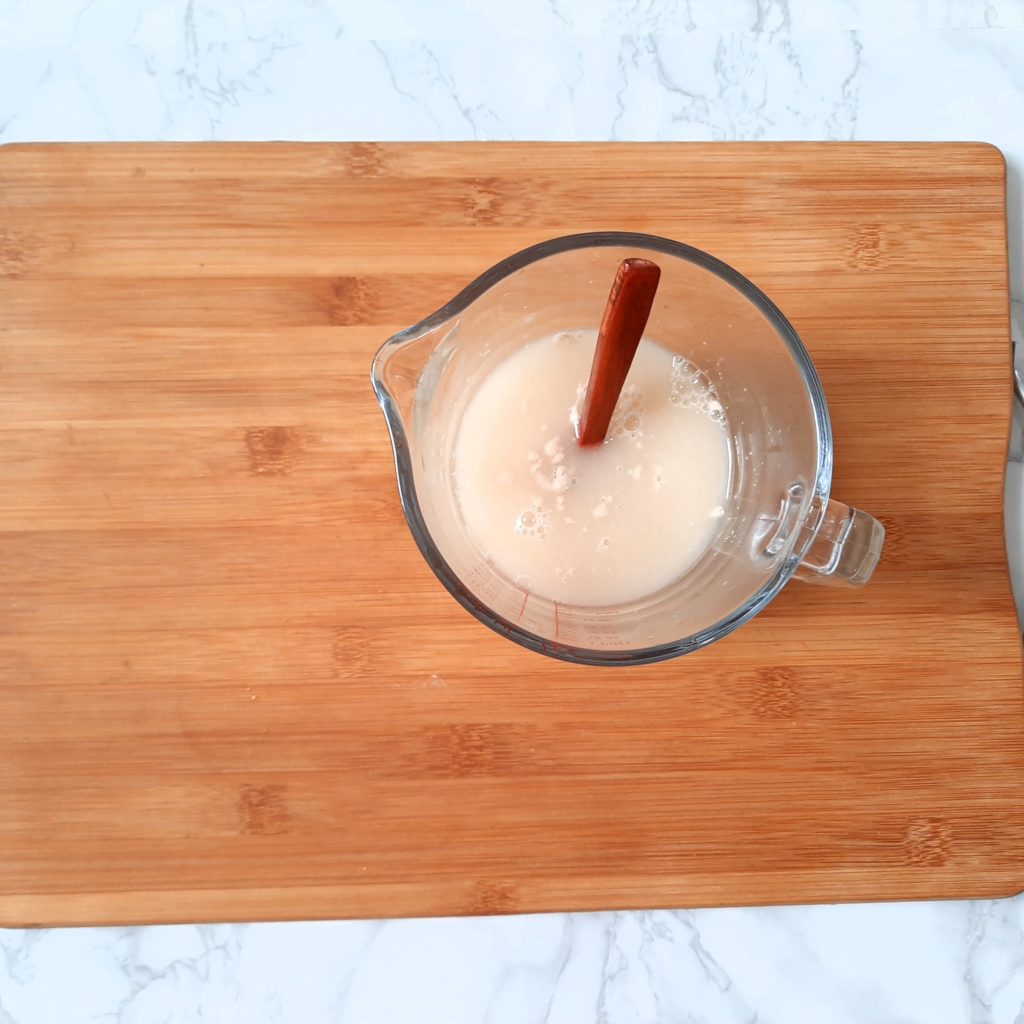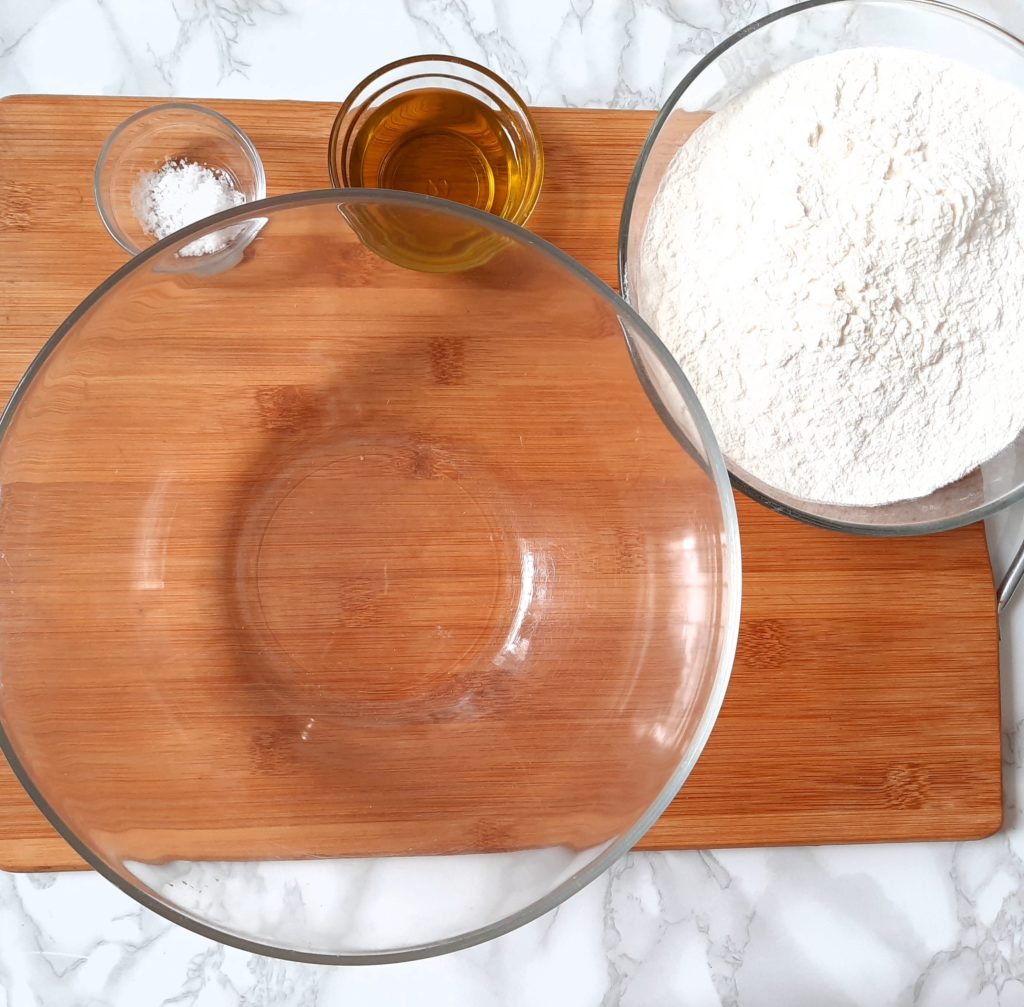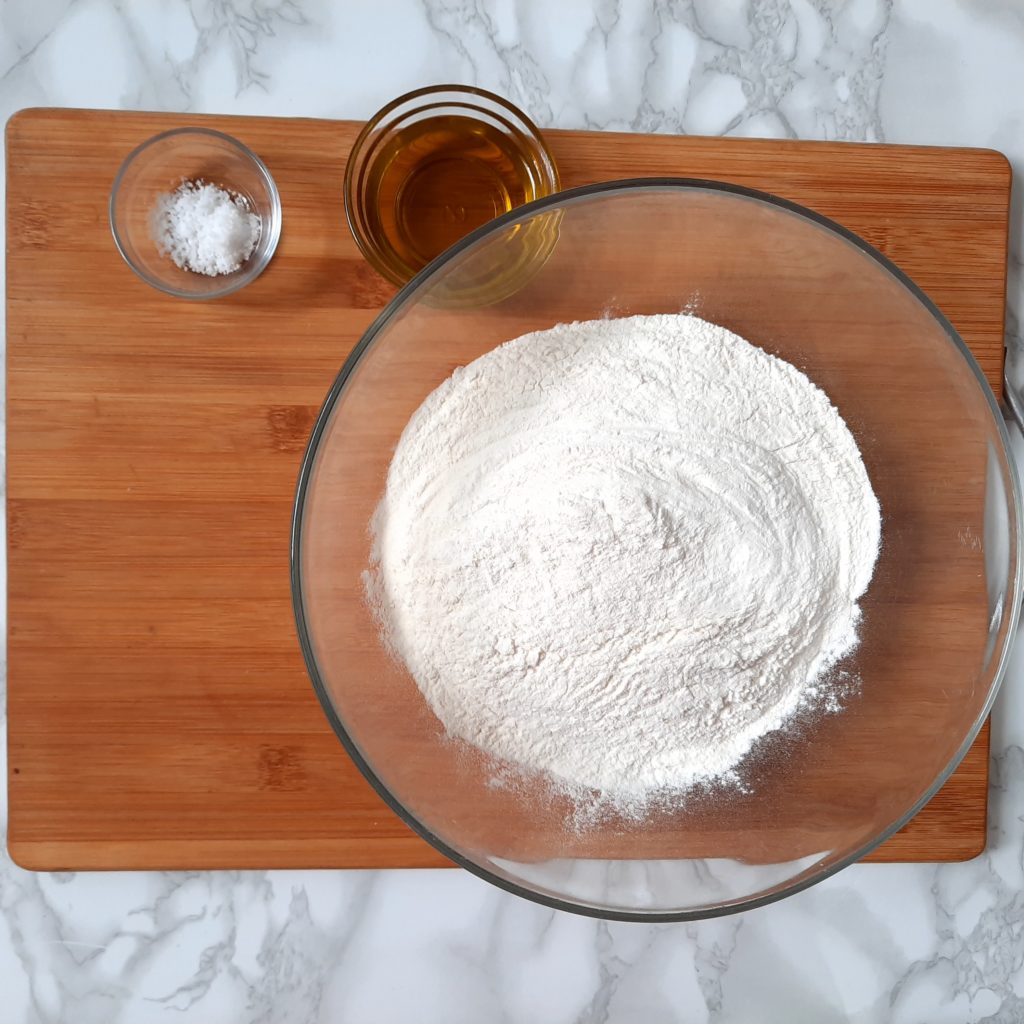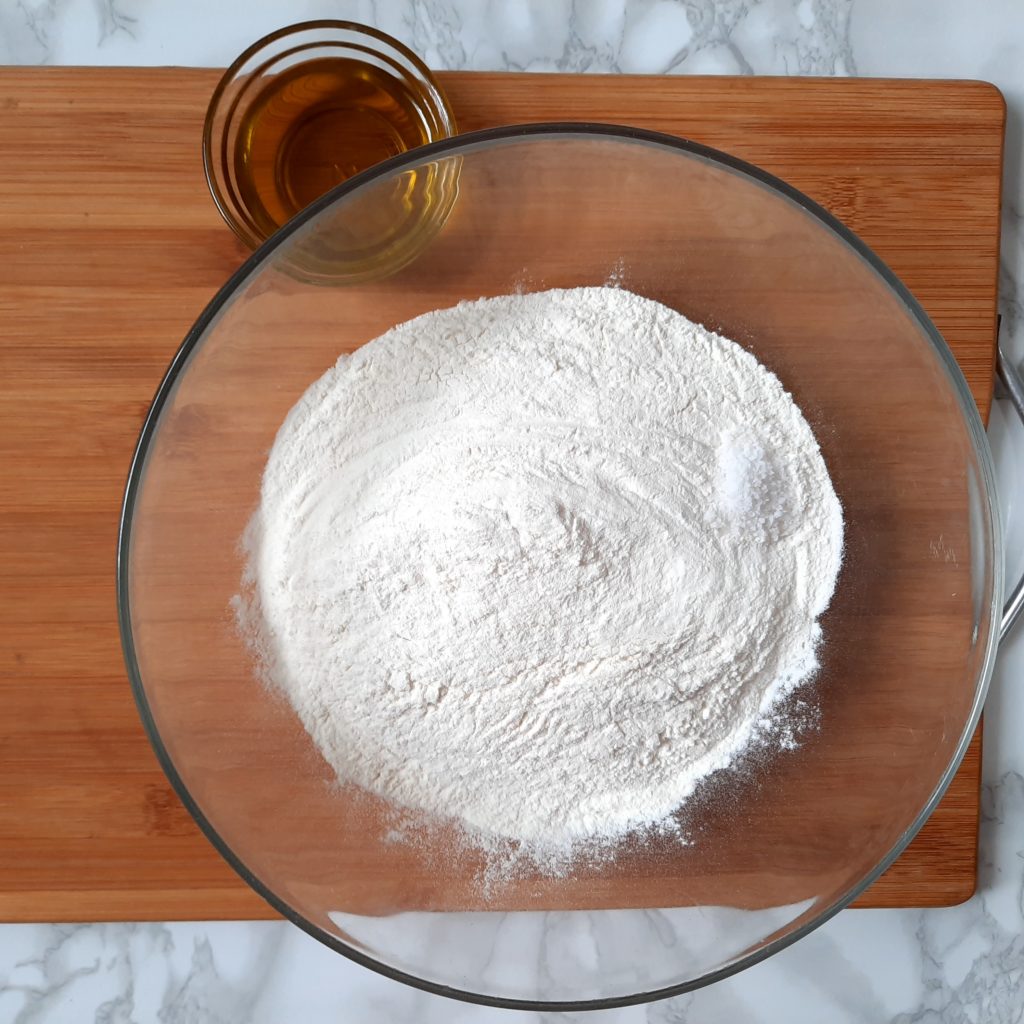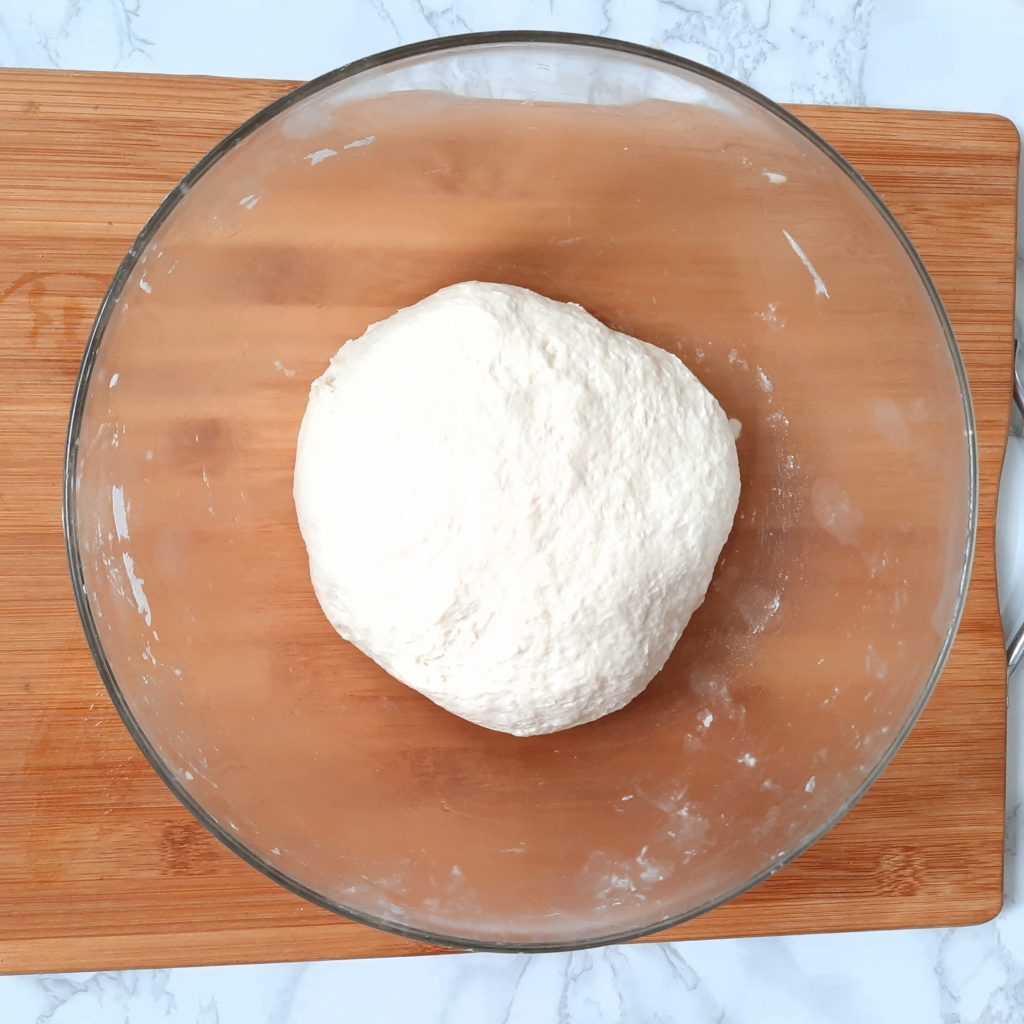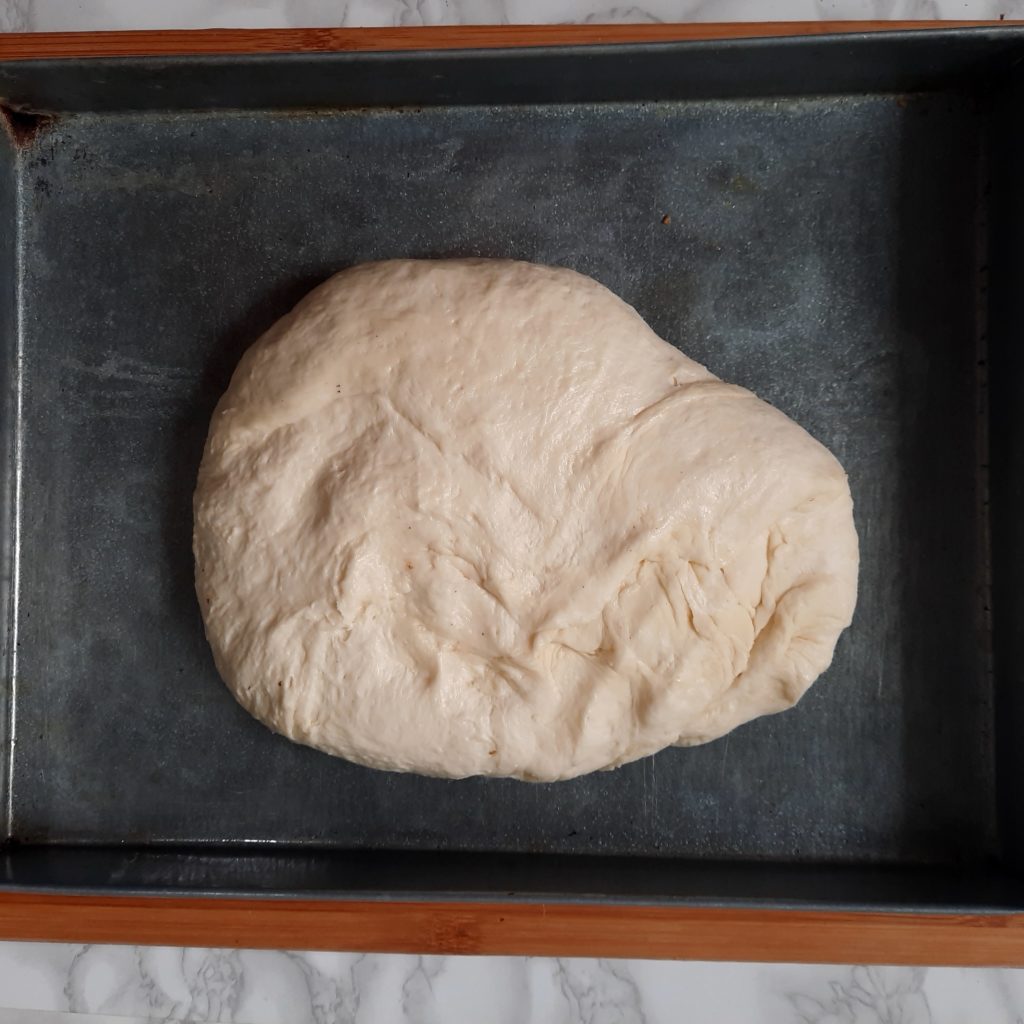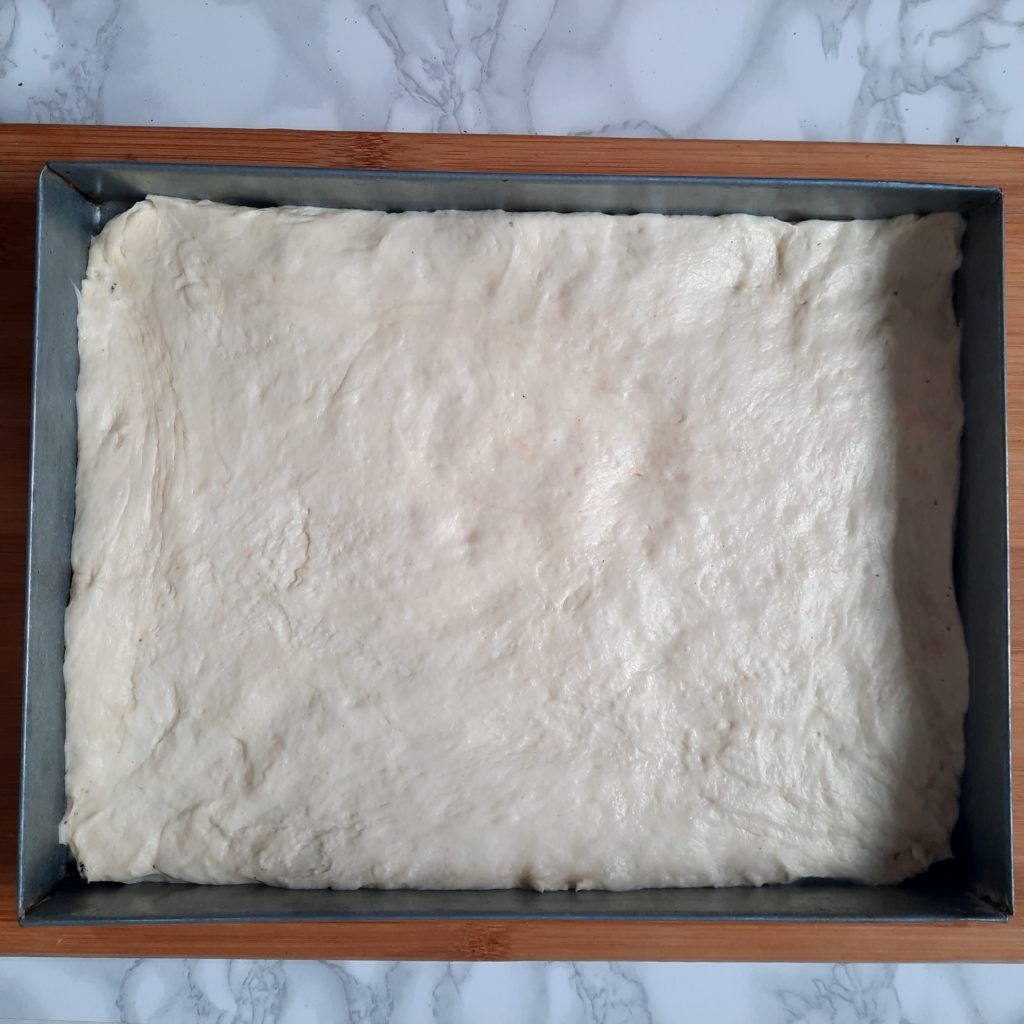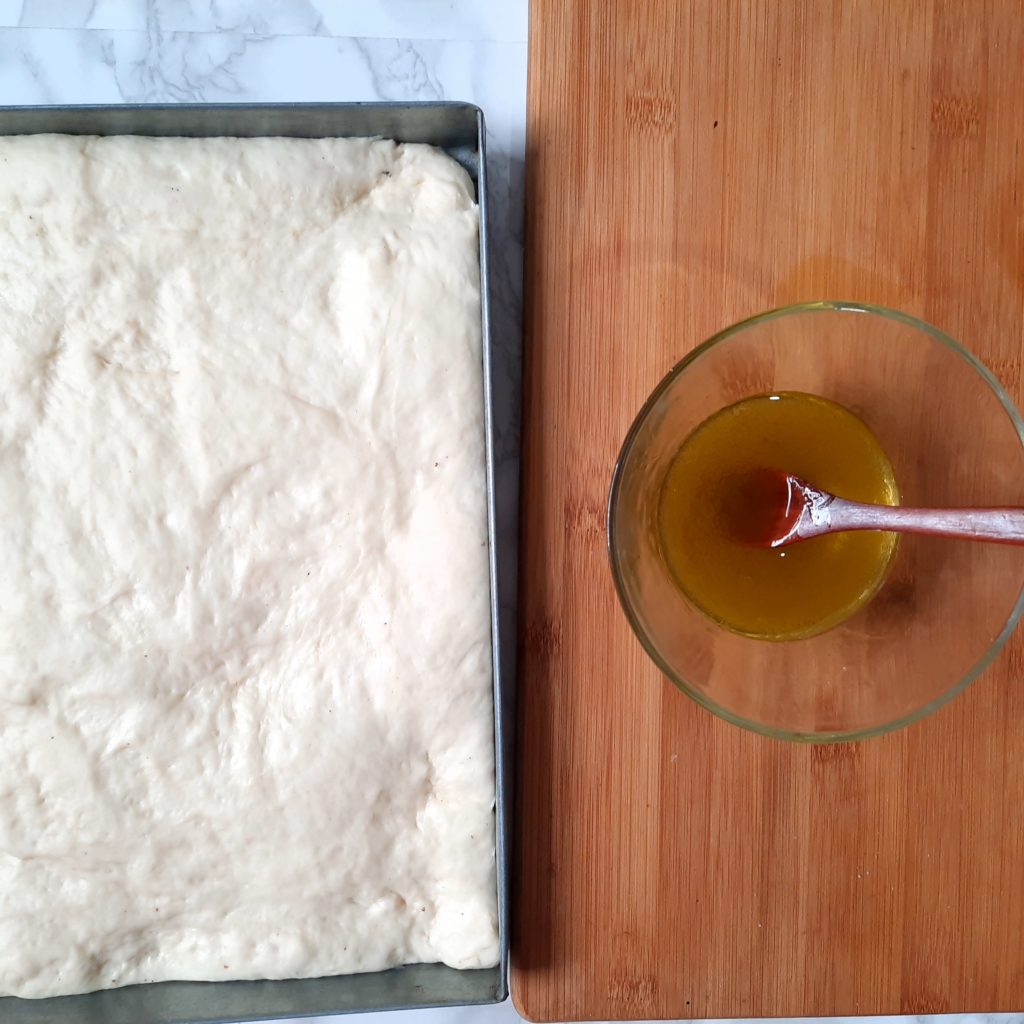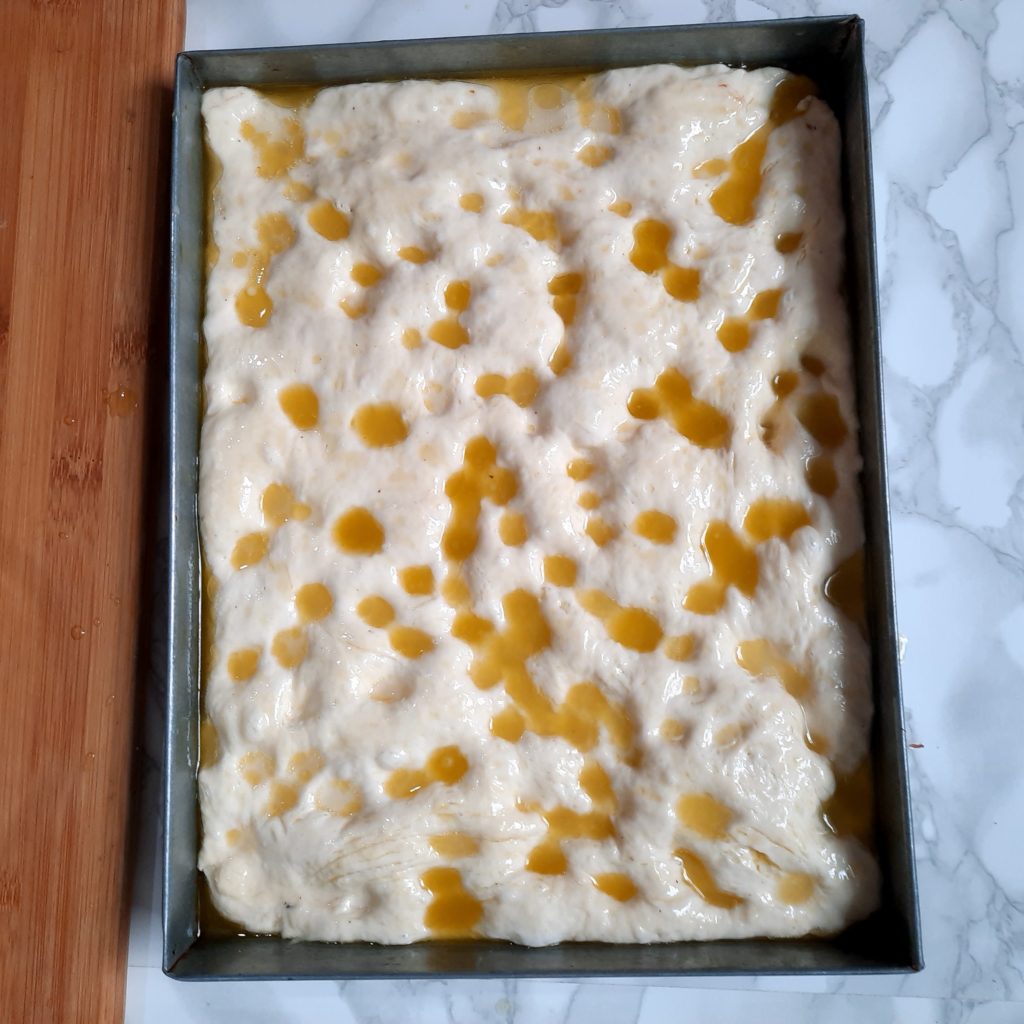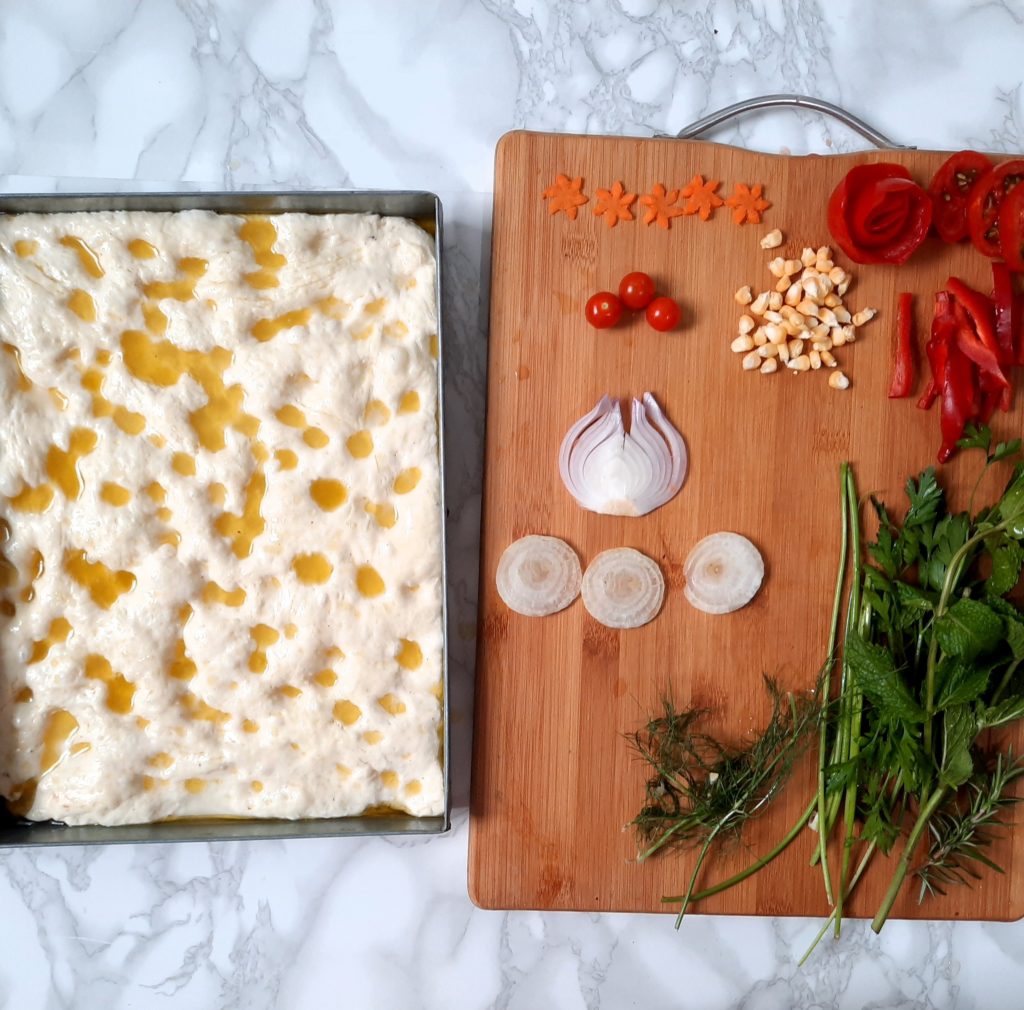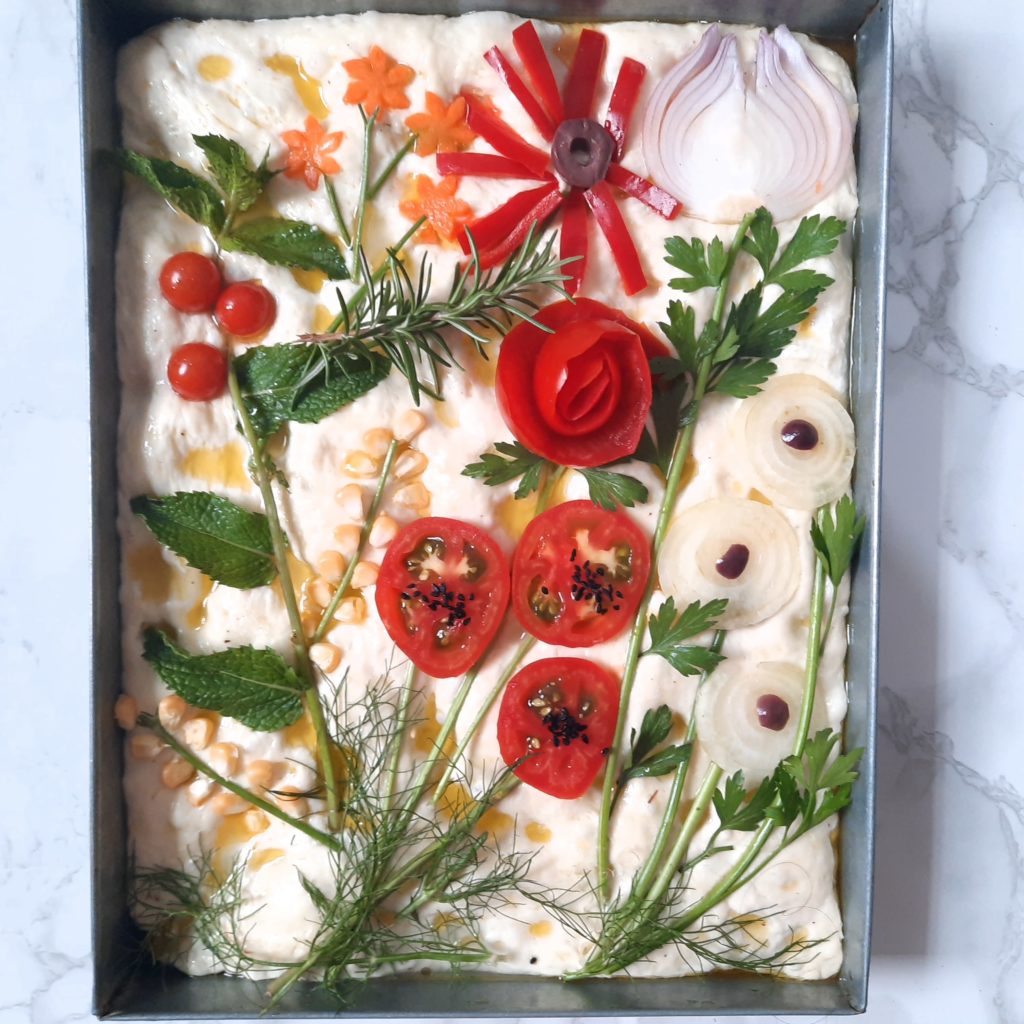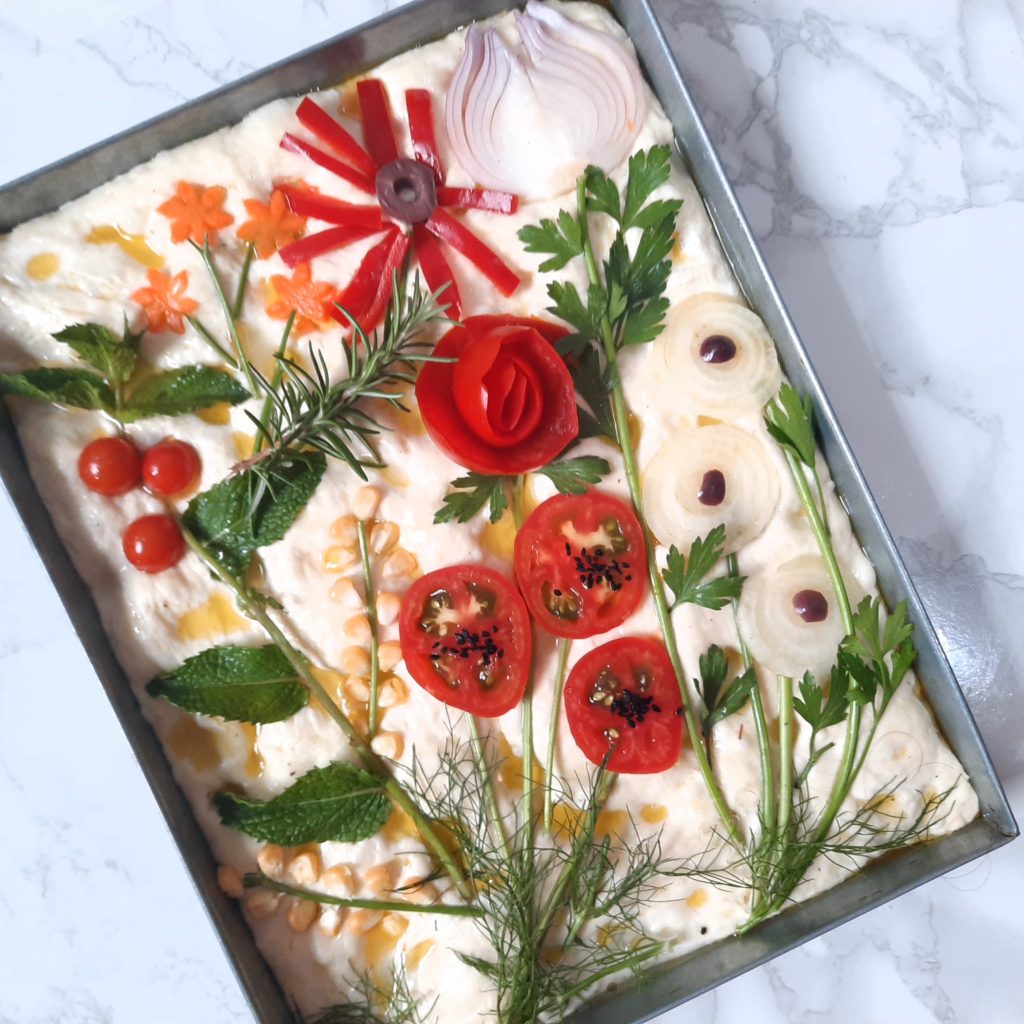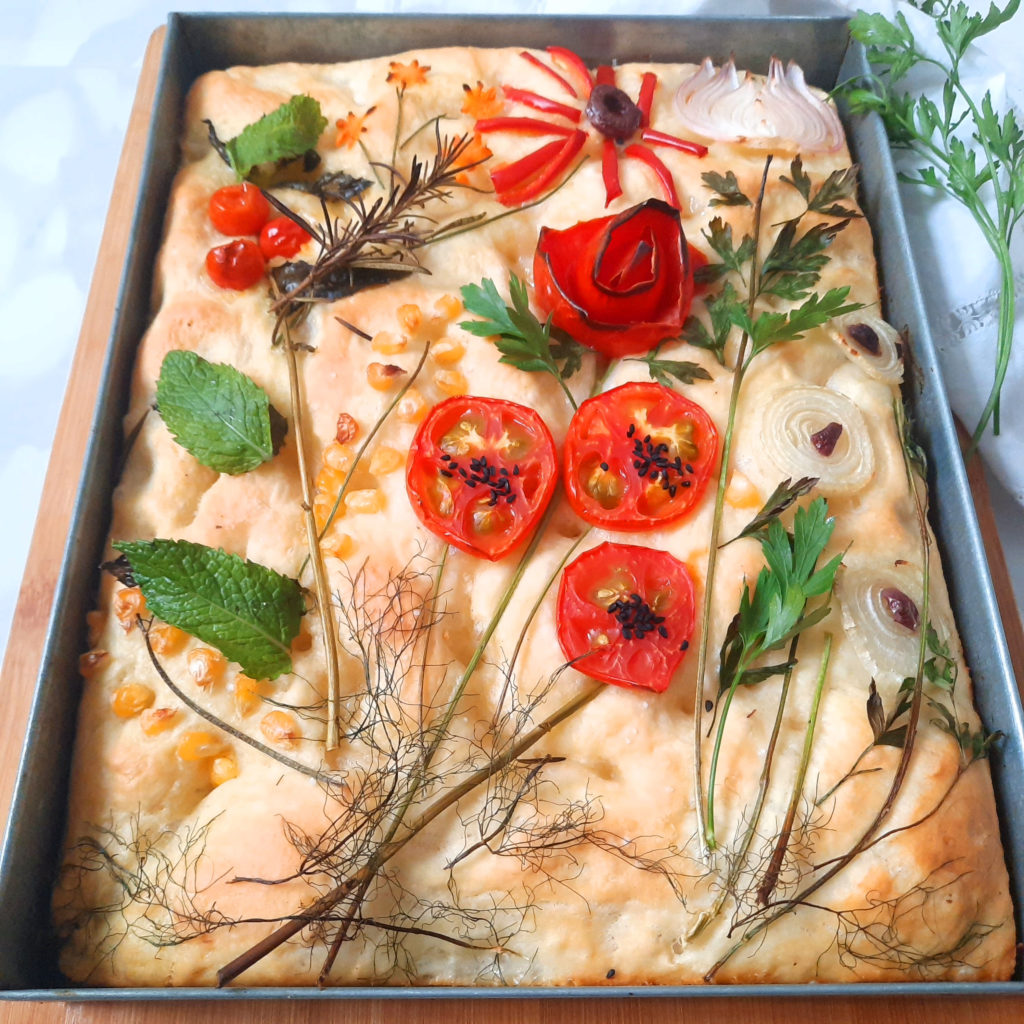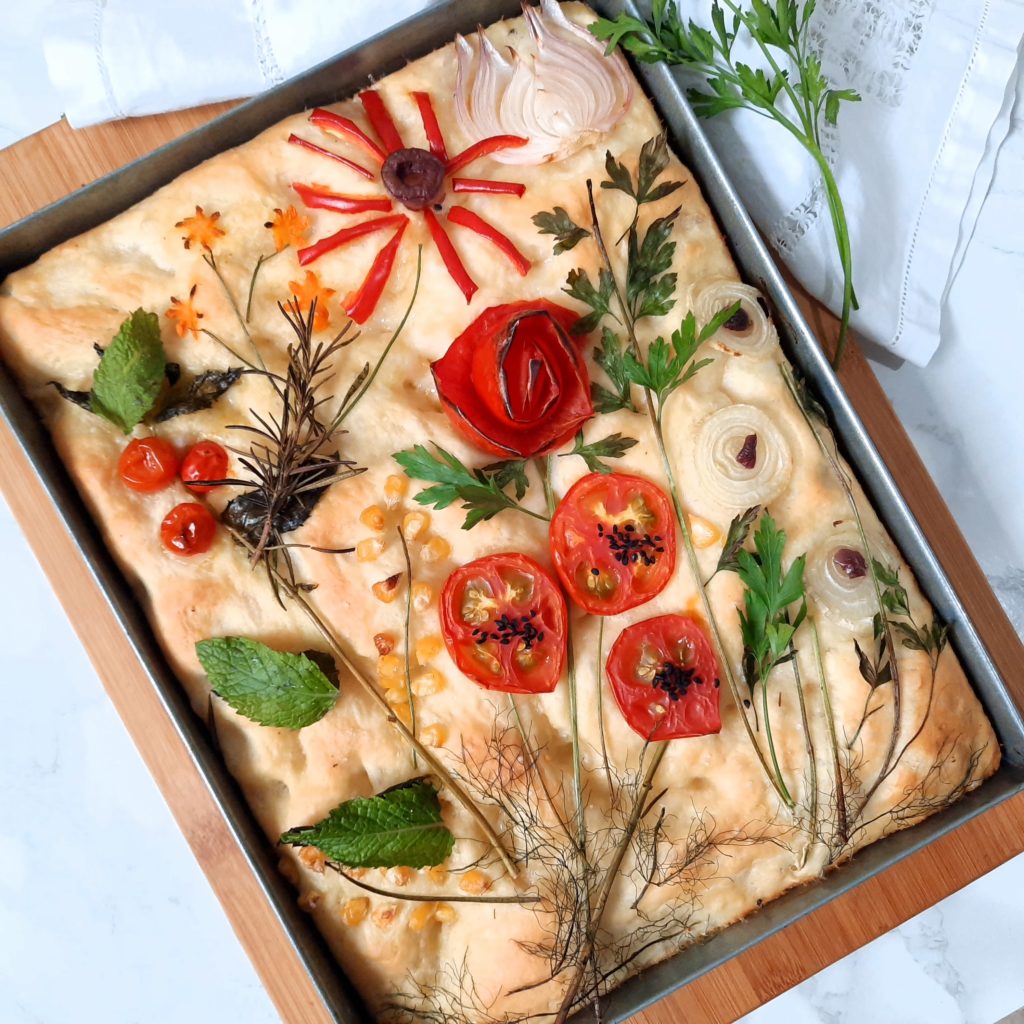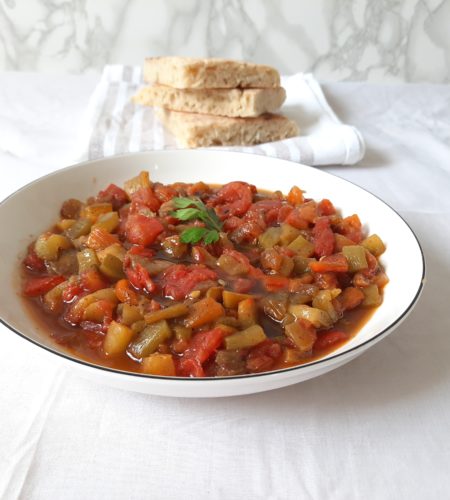Focaccia is an Italian yeasted flatbread topped with olive oil. It is very famous throughout Italy and in the world with a long history that reaches times of Ancient Greek culture. Try our recipe to enjoy this versatile bread alone or to go with any meal.
Origin and history
Focaccia is one of the most popular Italian bread which is also called Fügassa in Ligurian (Gallo-italic language in the region of Liguria, Northern Italy).
The word focaccia comes from the Latin “focacia” derived from the root “focus“, which simply means “cooked in the hearth” (a hearth is a brick- or stone-lined fireplace used for heating and cooking food).
In the region of Liguria, where the word ‘fugassa‘ means bread the word was in use from the 13th century as a reference to the classic focaccia of the city.
The origins of the focaccia are estimated to be about 2000 years older; already Phoenicians, Carthaginians, and Greeks have used barley, rye, and millet flour to cook them on the fire.
In ancient Rome, focaccias were offered to the gods and in the Renaissance era, they were consumed with wine at wedding banquets.
The focaccia seems to owe its birth also to the long waiting times that the bakers had to face during work nights: they thought to bake pieces of unleavened dough directly on the base of the oven.
However, it was not until the nineteenth century that we start to have something more similar to the current focaccia by taste and shape.
Notes and tips
To enjoy a perfect focaccia bread, here are some useful tips:
- Like we repeat it each time and to have better results, always use high-quality ingredients: good brand of extra virgin olive and high-quality flour.
- You can use all-purpose flour or bread flour. Either flour is fine but bread flour produces a chewier bread.
- Active dry yeast can be replaced with sourdough. But be careful with the proportions, 3 grams of active dry yeast corresponds to 50 grams of sourdough.
- You can stuff the focaccia bread, for that divide the dough into two parts, roll out the first part in the pan, arrange the filling and immediately above, add the other part of the dough.
- For adding toppings before cooking, keep in mind that each ingredient will undergo a transformation in the oven, so avoid ingredients whose flavor could be accentuated or vegetables that would release excessive liquid in cooking (or you can pre-cook them).
- For the topping, you can definitely use fresh or dried herbs, just triple the quantity of the fresh herbs compared to dried herbs.
Toppings
You can customize the focaccia with various toppings, for that drizzle the dough with the olive oil, then add toppings to your liking. Here are some ideas:
- Herbs: rosemary, thyme, oregano, dill, marjoram, basil, …
- Vegetables: garlic, onion, cherry tomatoes, sliced tomatoes, sun-dried tomatoes, julienned red/yellow/green peppers, julienned carrots, sliced hot peppers, sliced zucchini, sliced lemons, artichokes, …
- Olives.
- Cheese: parmesan, feta, mozzarella,…
- Sauces: pesto, tapenade, marinara, harissa,
- Nuts: almonds, walnuts, pine nuts, …
- Mushrooms.
- …
Serving
Plain focaccia bread seasoned with olive oil and salt can be served for breakfast. The focaccia is best combined with cooked vegetables or a salad. Or, you can always serve it with soups, stews, and dips.
Variants
- Fougasse;
- Pogača;
- Farinata;
- …
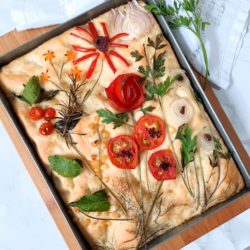
Focaccia
Ingredients
Dough
- 400 g all purpose flour
- 225-250 ml water
- 7 g honey
- 3 g active dry yeast
- 3 g salt
- 30 ml olive oil , extra-virgin
Toppings
- 45 ml water
- 45 ml olive oil , extra-virgin
- ½ tsp sea salt flakes
- Herbs, vegetables, olives, nuts, …
Instructions
Prepare the dough
- Whisk the lukewarm water, honey, and yeast together in a bowl and allow to rest for 5 minutes.
- In a large bowl, sift together the flour and salt.
- Make a well in the middle of the flour, add olive oil, and the rested yeast in lukewarm water, adding it gradually until you have a slightly sticky dough (you may not need all the water).
- Knead the dough for 8-10 mins until your dough is soft and less sticky. Poke it with your finger – if it slowly bounces back, your dough is ready to rise. If not, keep kneading.
- Put the dough into a clean bowl, cover with a towel, and leave to prove for 1hr30-2hr until doubled or even tripled in size.
Flatten the dough
- Generously oil a 34×22 cm (13x9in) baking pan.
- Tip the dough onto the work surface, then press it down to fill the pan.
- Let it uncovered and leave to prove for another 30-45 mins.
Add toppings and bake bread
- Preheat oven to 450°F (232°C).
- Whisk the olive oil with the water. Set aside.
- Press your fingers into the dough to make dimples all over the surface.
- Drizzle on the olive oil topping and use your hands or a pastry brush to spread it all over the top. Sprinkle with a little sea salt flakes.
- Add your toppings: herbs, cherries tomatoes, garlic, rosemary, …
- Bake for 15-20 mins until golden.
- Remove the focaccia from the oven and whilst the bread is still hot, drizzle over olive oil.
- Let it cool before cutting into squares and serving.
Sources: 1. Wikipedia - Focaccia: www.wikipedia.org. 2. Taccuinigastrosofici - Storia della focaccia: www.taccuinigastrosofici.it.



